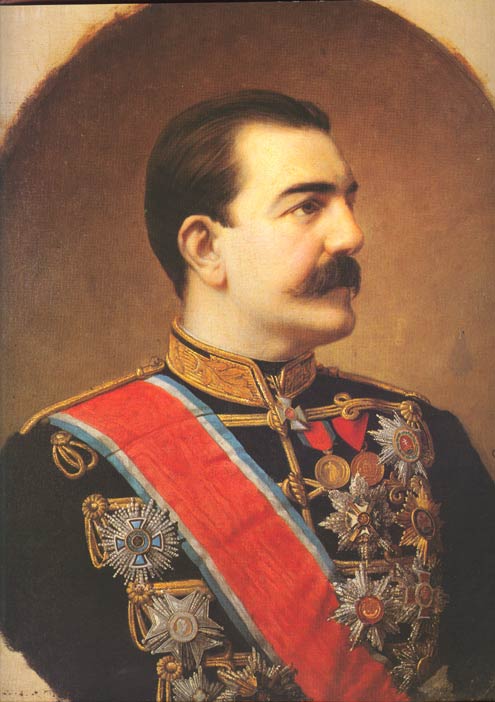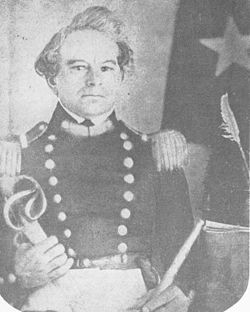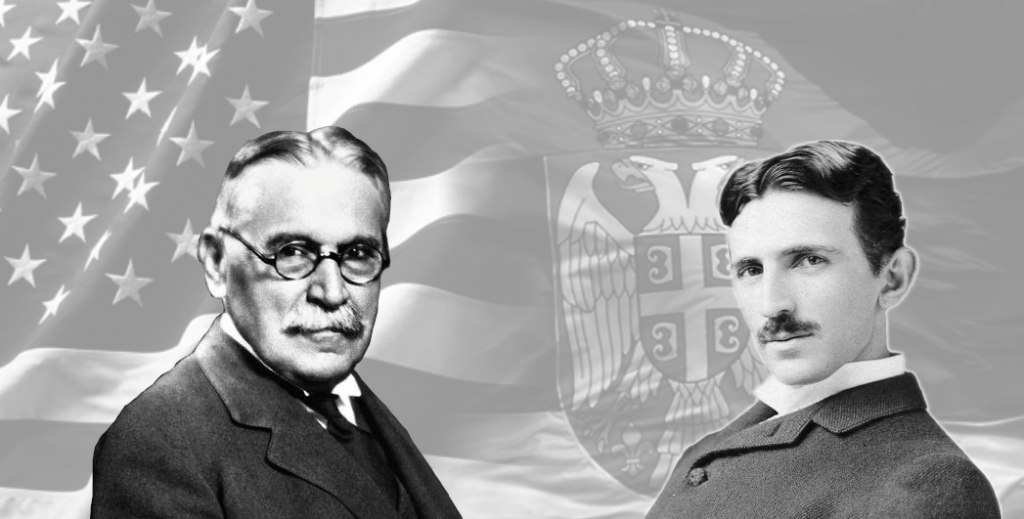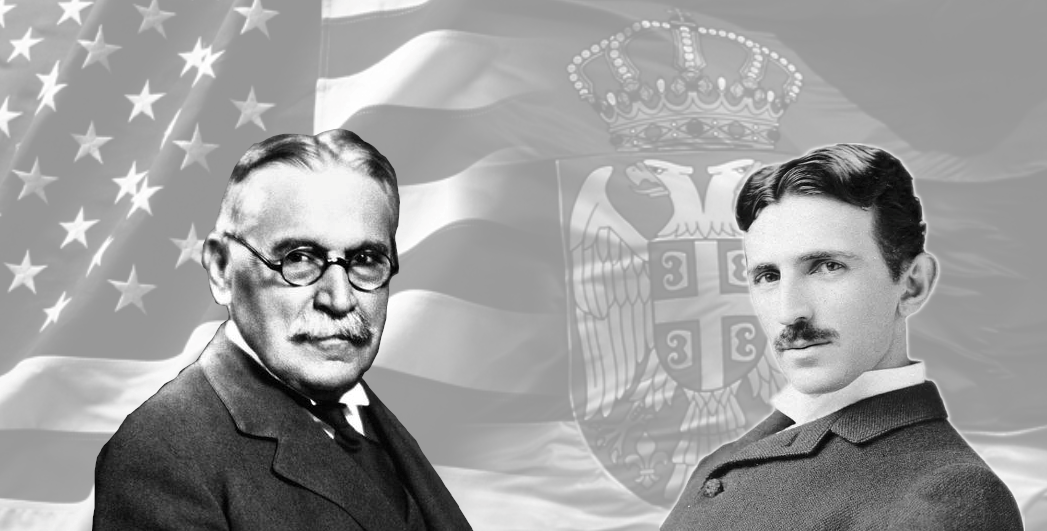NAŠ BLOG
TESLA AND PUPIN AS SYNERGY OF POTENTIAL
REPUBLIC OF SERBIA AND UNITED STATES OF AMERICA
Bilateral relations between the United States and the Republic of Serbia have been shaped by eventful history and a deep-rooted spirit of alliance. Particular historical figures, records and deeds best illustrate the centuries-old unbreakable ties interlaced between the two countries.
1835 brought along the first written reports on the activities of Serbian rulers to America, when Commodore David Porter from Constantinople reported to his ministry. “Prince Milos from Serbia has received many honours from the Turkish government since he arrived here. Serasker Pasha, Kapudan Pasha and Khalil Pasha are organising parties for him, and the Sultan presented him with his portrait trimmed with diamonds,” it was stated in the forwarded document.
The next stage was marked by the establishment of consular relations between the Principality of Serbia and the United States. Prince Milan Obrenovic passed a decree on 1. June 1879., on the establishment of honorary consulate general in New York. On the same day, Gerhard Jansen was appointed the first Honorary Consul General of Serbia. On 7. July 1882., US President Chester Arthur signed the Trade and Consular Conventions and appointed Eugene Skyler as the first plenipotentiary in Serbia, who performed those tasks from Athens.
Prince Milan Obrenovic

On the other hand, the interest of Serbian citizens for America was significant. They, like other European people at that time, immigrated to the newly discovered continent. One of the first and most famous was Djordje Sagic, or George Fisher. He arrived to the United States in 1811 and built there a very successful political and social career. He was the first Serb to obtain American citizenship. As Stephen Austin’s closest associate, he was credited with annexing Mexican Texas to America at the time. However, he never forgot his Serbian origin and he maintained contacts with Joakim Vujic, Njegos and Simo Milutinovic Sarajlija for decades.
Djordje Sagic / George Fisher

Although there is no official photograph of the event itself, one of the most impressive images from the political history of the two countries is the Serbian flag raised at the White House on 28. July 1918.. This was a mark of support and respect for the “gallant” Serbian people, as president Woodrow Wilson stated, and their heroic struggle in the First World War in which the two countries were allies. Woodrow Wilson was one of the most popular American presidents in Serbia, and a number of squares in Belgrade, Novi Sad and Zrenjanin were named after him.
Close bilateral relations between the two countries came into the limelight at the Paris Peace Conference in 1919. Upon that occasion, the support of America was crucial for the international recognition of the newly created Kingdom of Serbs, Croats and Slovenes.
The Halliard mission from 1944, during which the local citizens of the Pranjan region rescued more than 500 American pilots in the Second World War, is a moving tale about solidarity and friendship emerging in the most difficult moments of struggling for freedom. Despite the fear of the enemy and severe scarcity in food, the locals were selflessly hiding pilots of the Allied, and eventually built a runway to for them to evacuate. Today, Mission Halliard Foundation maintains contacts with families from the Pranjani region. During the Covid-19 pandemic, it donated funds to the Pranjani Health Center.
Synergy of potential of the two states is most visible in the timeless works of scientists of Serbian origin who lived and worked in America – Mihajlo Idvorski Pupin and Nikola Tesla.
Pupin described his arrival to America as follows: “When I landed at Castle Garden forty-eight years ago, I had only five cents in my pocket. Had I brought five hundred dollars, instead of five cents, my immediate career in a new country, and to me a perfectly strange land, would have been the same. It is no handicap to a boy immigrant to land here penniless when he strikes out for an independent career, provided that he has the stamina to stand the hardships that may be in store for him.”
Pupin is one of those who lived the American dream. His coils solved the problem with long-ranging telephone wires. Pupin became famous all over the world for his inventions. He was a professor at Columbia University, holder of the Yugoslav White Eagle of the First Order and honorary consul of Serbia in the United States. He was one of the founders and long-term president of the Serbian National Defence in America, and in 1924 he was awarded Pulitzer Prize for his autobiographical work “From Immigrant to Inventor”. He was a member of the American Academy of Sciences, Serbian Royal Academy and honorary doctor of 18 universities.
Declaring that exceptional people can indeed do extraordinary things, but the course of the destiny of a nation will always be guided not only by temporary efforts, but by the persistent power of the traditions of a nation, he seemed to acknowledge the historical course of relations between Serbia and America, intricately rooted in his own life.

Nikola Tesla, one of the greatest minds of all humanity, was as a boy amazed by Niagara Falls. He dreamed of building a large turbine there which would generate electricity: “I was fascinated by the description of Niagara Falls which I read carefully – and in my imagination I saw a big wheel driven by these waterfalls. I told my uncle that I would go to America and implement my project there. Thirty years later, I saw my ideas come true in Niagara and admired the illusive secret of the mind,” he wrote after his boyhood dream came true on 15. November 1896., and electricity was distributed from this place.
He moved to New York in 1884. Very quickly, Tesla reached new discoveries in the field of physics and electrical engineering and became the author of about 1000 patents and inventions which, according to his selfless will, are today the property of the entire human civilization. His inventions based on alternating current proved as ground for the entire further development of modern society.
In the eulogy for this visionary, the mayor of New York stated that Tesla was one of the most useful and successful man who ever lived. He added that his achievements were great and were becoming greater as time went on.
Considering today’s attitudes of the officials of the United States of America and Serbia, the last statement applies to modern bilateral relations and the announcement of more intensive cooperation between the two countries in the future.
Today, over a million Serbs live in the United States, most of them in the Chicago metropolitan area. Other important communities of Serbian-Americans are in Buffalo, Cleveland, Detroit, Indianapolis, Pittsburgh, Los Angeles, and Southern California – in San Diego, Phoenix and Greensboro. The size of Serbian population in Chicago is also indicated by the fact that the Serbian language is the fourth ranked, after English, Spanish and Polish.
Serbian Orthodox Monastery of St. Sava in Illinois

Real estate management and rental company Dipos Belgrade is an important link in building prospective relations with diplomatic and consular missions of foreign countries in the Republic of Serbia.
Today, Dipos is a credible and respectable partner due to the services it provides and the contacts with accredited foreign diplomatic missions and their families. The ties have been established and nurtured for decades in order to meet their needs for the simplicity of life and work while in Belgrade.
The Embassy of the United States of America in Belgrade and Dipos have traditionally developed successful partnership even since 1950s. With such cooperation in mind, the Embassy still uses the real estate managed by Dipos located in the Diplomatic Colony in Kosutnjak, one of the most beautiful and safest places to live in Belgrade, to accommodate its employees and their families.
Diplomatic Colony in Kosutnjak








 2018
2018